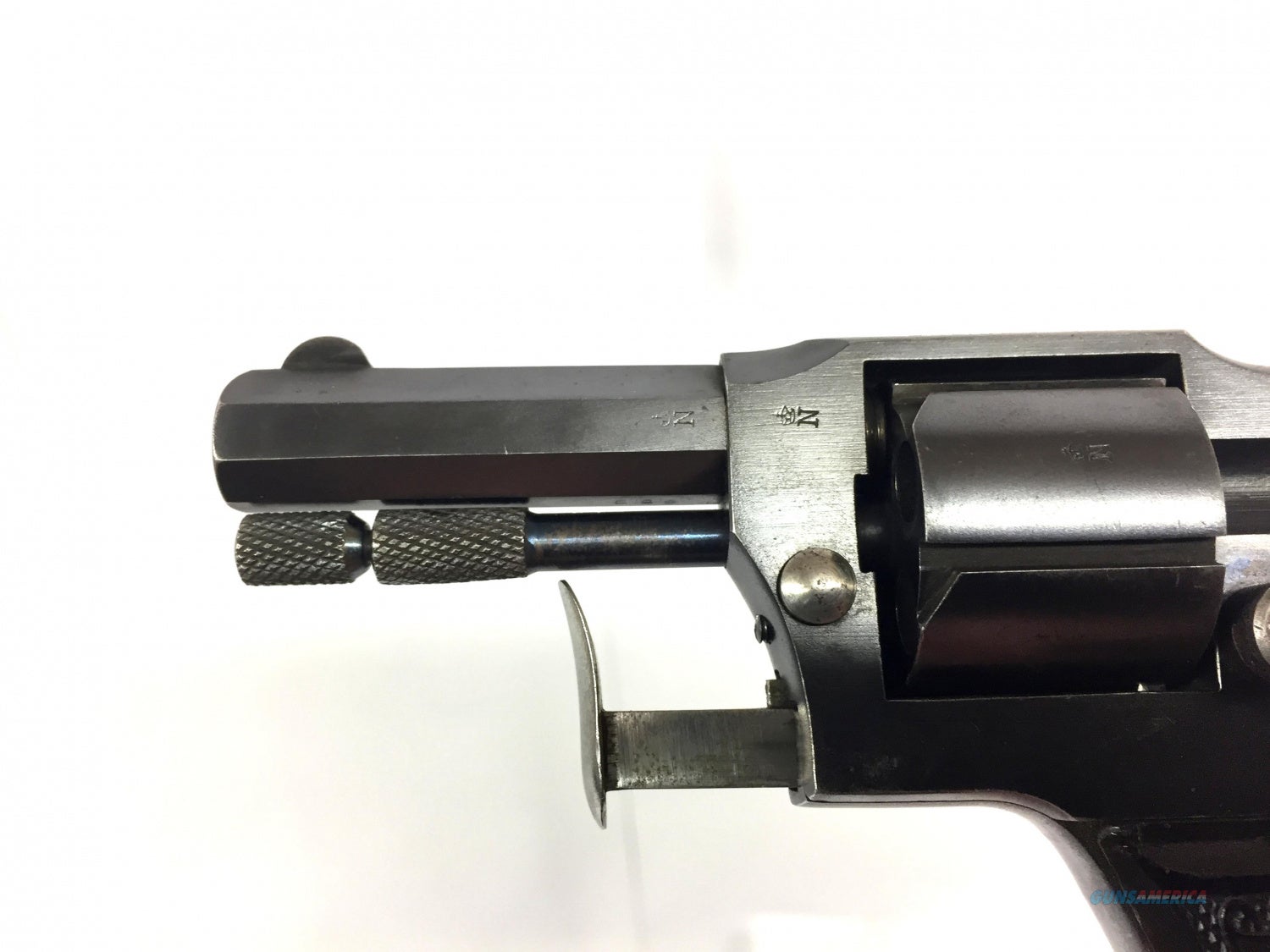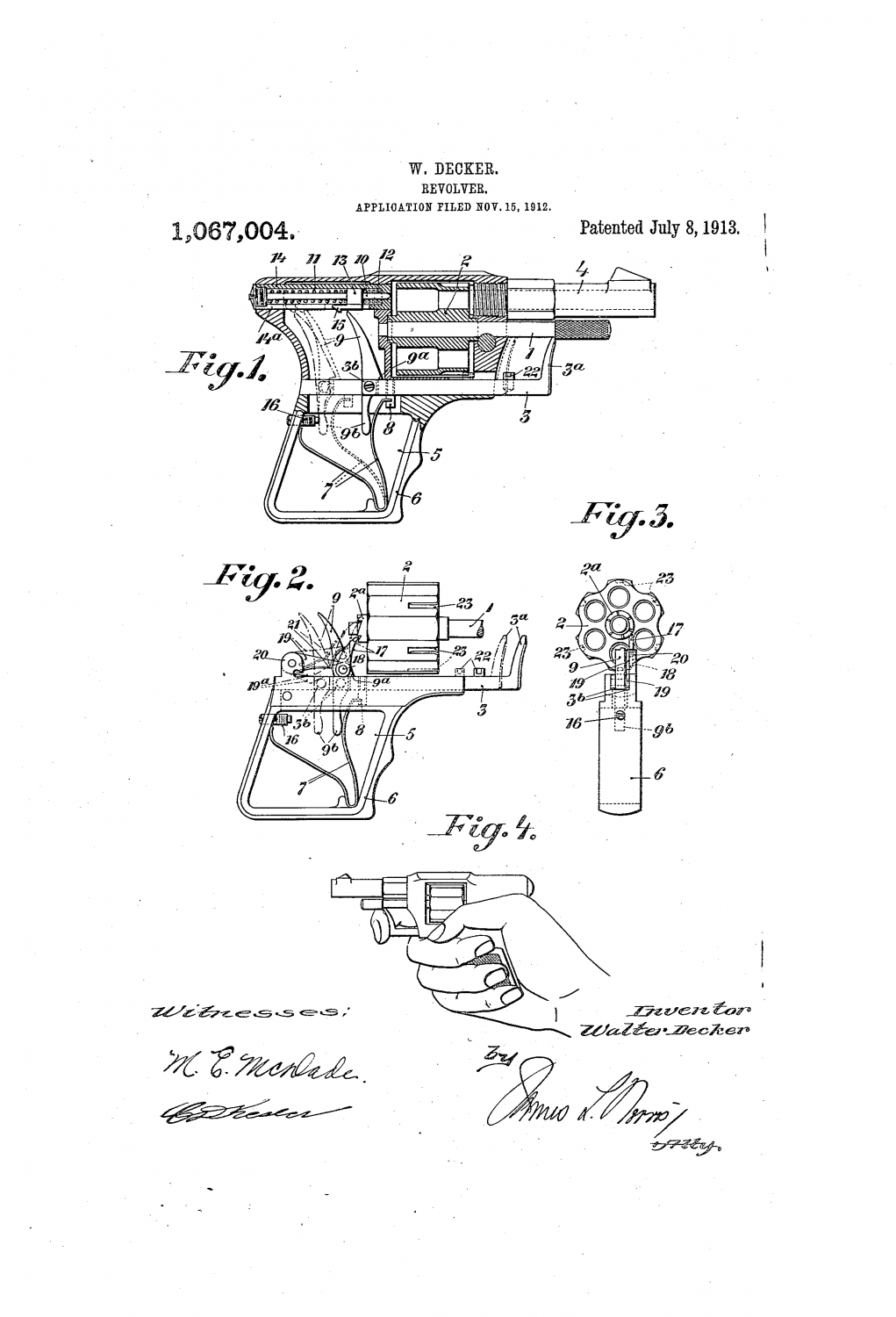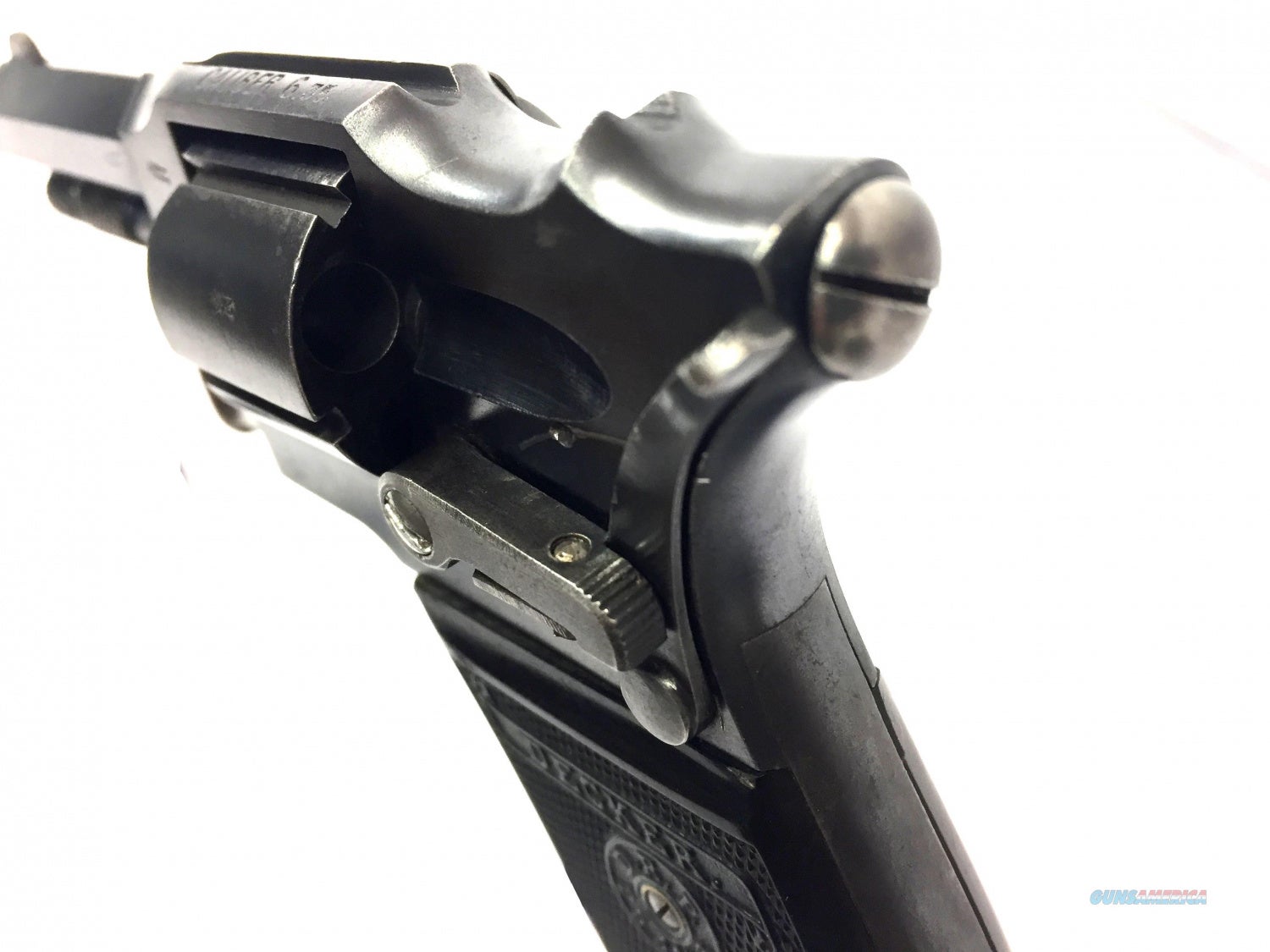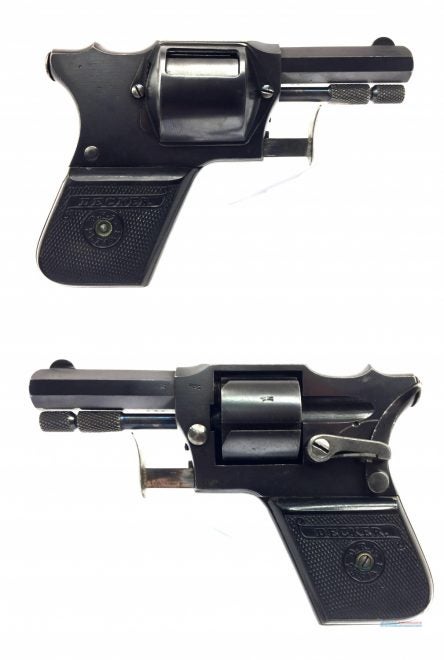This week’s Wheelgun Wednesday takes a look at one of the best-known silhouettes of cheap, dollar store squirt guns that is based on one of the least-known revolvers – the Decker .25ACP/6.35mm pocket revolver. Have you ever looked at one of those super-cheap translucent plastic comically undersized squirt guns with no trigger guard and a rod-style trigger and thought that it had little to no semblance to a real firearm? I know I have. Little did I know that they were actually very close in resemblance to a tiny pocket revolver from pre-WWI Germany.

LH of the Decker. Image Credit: GunsAmerica
The Decker – Design
Located in the state of Thuringia, the German town currently known as Zella-Mehlis and previously known as Zella St. Blasii was well known for arms design and manufacture, being a location of Anschütz and Walther factories in the early twentieth century. Another, smaller arms manufacturer in the area at the time was Decker. In 1912, Walter Decker designed and filed for a patent for his striker-fired pocket revolver. The design of the Decker is pretty unique.

Drawings from Walter Decker’s Patent
The Decker’s main characteristics are a 2″ barrel, straight-pull rod-style trigger, no trigger guard, a rhomboid grip that resembles early twentieth-century pocket autos, a frame-mounted safety, the use of a striker rather than a hammer, a five-shot cylinder, manual rod ejection, and the use of a cylinder shield on the right side of the frame. When the trigger was pulled, the trigger rod would both index the cylinder and cock and release the striker.

LH of the revolver, note safety lever, striker. Image Credit: GunsAmerica
The Decker – Cylinder Shields Up!
The thin metal cylinder shield was mounted to the frame with two screws and covered most of the right-hand side of the cylinder. The shield was made necessary by the location of the trigger rod forward and in line with the cylinder. One’s trigger finger would therefore be along and in front of the cylinder, which could not only cause cylinder interference and friction but perhaps pinch one’s flesh or worse, burn one’s finger along the cylinder gap.

RH View of the revolver, note Cylinder Shield. Image Credit: GunsAmerica
Despite all of the innovative (for the time) aspects of its design, the tepid caliber and small-scale production of the Decker, combined with the massive upheaval and disruption of manufacturing that World War I caused in Germany, ensured that the Decker’s most common legacy today is being the silhouette of countless cheap squirt pistols. I just wonder if it’s pure coincidence or if the toy designer saw one and said “that’s what we’ll base the mold of our squirt gun on”.
 Your Privacy Choices
Your Privacy Choices
